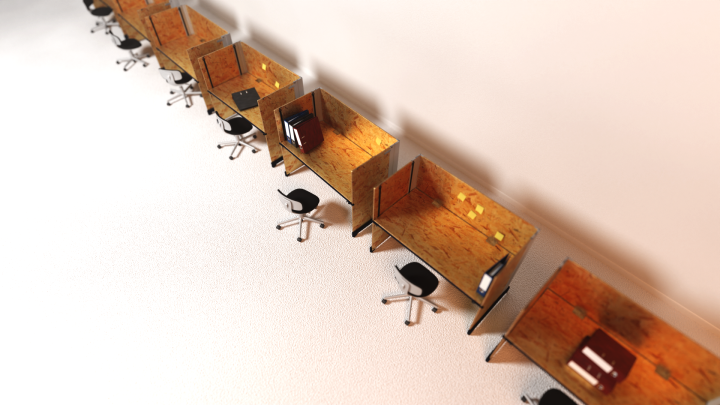Designer Konstantin Grcic
Konstantin Grcic (*1965) was trained as a cabinetmaker at the John Makepeace School for Craftsmen in Wood and then studied design at the Royal College of Art in London, among others with Jasper Morrison, whose assistant he became. In 1991 he founded his own office in Munich, Konstantin Grcic Design GmbH is now based in Berlin. The office is active in various fields, from industrial design projects to exhibition design and architectural collaborations. His notable clients include Aeance, Authentics, Cassina, ClassiCon, Flötotto, Flos, Galerie Kreo, Kettal, Laufen, Magis (Bell Chair), Muji, Nespresso, Plank, Smart and Vitra. He received numerous awards such as the Compasso d'Oro for his MAYDAY lamp (Flos, 2001), MYTO chair (Plank, 2011). Works by Konstantin Grcic are part of the permanent collections of the most important design museums in the world, such as the Museum of Modern Art (MoMA) in New York or the Centre Georges Pompidou in Paris. Konstantin Grcic redefines functions and combines formal rigor with intellectual acuity and humor. His work is characterized by meticulous research into the history of art, design and architecture and his passion for technology and materials.
Konstantin Grcic - industrial Design
Konstantin Grcic is considered one of the most influential designers of our time. He himself fancies the Frenchman Philipe Starcke. Grcic realizes projects against the design trend and against the fast pace of life. In his opinion, Jasper Morrison's avant-garde turned into mainstream. He does not want to realize anything formulaic, but to test the limits in industrial design, not an easy flow of things, but a confrontation with them. Konstantin Grcic sees himself as a problem solver. His Chair one was controversial and took a long time to get to market. Grcic sees himself more as an industrial designer serving the commercial market than as an artist. Grcic experienced the good interaction between antiques and plastic furniture in his parents' house. Design, in his view, is more of an evolution than a reinvention. The typology of most furniture is not fundamentally rethought, but optimized; a chair consists of a seat, backrest and legs. His creative moment happens with practical tools, the computer records the creative process. In the first phase of a project, he prefers to work alone, followed later by a dialogue with one of his collaborators, who helps him solve problems. He likes mechanics and construction. He finds the design trend with limited editions and ugly and useless things important to initiate new discussions.
Products by Konstantin Grcic in the pro office store
The Vitra Rookie
The Vitra Rookie from 2018 is an agile office swivel chair. It is small, agile and - by office standards - unconventionally simple. It offers instant comfort with just a few adjustments. ROOKIE is all about flexibility and change; the chair inspires students, people in home offices, or corporate environments that thrive on the sharing and creativity of their employees.
The Vitra Citizen
The 2020 CITIZEN reinterprets the traditional office chair in an unconventional way. The chair's structure and shape are defined by a frame of bent tubular steel, while a free-hanging seat cushion offers a completely new seating experience. Suspended from the tubular steel frame by just three steel cables, the seat can move in all directions, creating a pleasant swinging motion. The interrelationship between the tubular steel frame and the upholstered elements determine the character of the CITIZEN: the frame defines the spatial structure of the armchair, while the seat and backrest provide volume and color. All elements of the armchair are exposed, giving the design visual lightness and a sporty nonchalance. The highback provides extra comfort while the lowback is suitable for conference situations and larger lounge areas.
The Vitra Hack
The term "hack" refers to the effective achievement of goals through unconventional means. The multifunctional system from 2016 is designed for solo independents and companies. The tabletop is height-adjustable between 300 and 1,250 millimeters with a handle or crank. At its lowest setting, the hack serves as a sofa, in the middle as a desk, and at the top as a standing table. This flexibility allows the Hack to ergonomically accommodate people of different heights. The Hack allows for many dynamic changes. It can be used as a height-adjustable desk (stand-sit desk) and as a sofa, depending on your needs. For the working person, the hack offers privacy in the room. On the sofa you can have a conversation for two. Its solid construction allows the furniture to be folded in just a few simple steps when needed.




